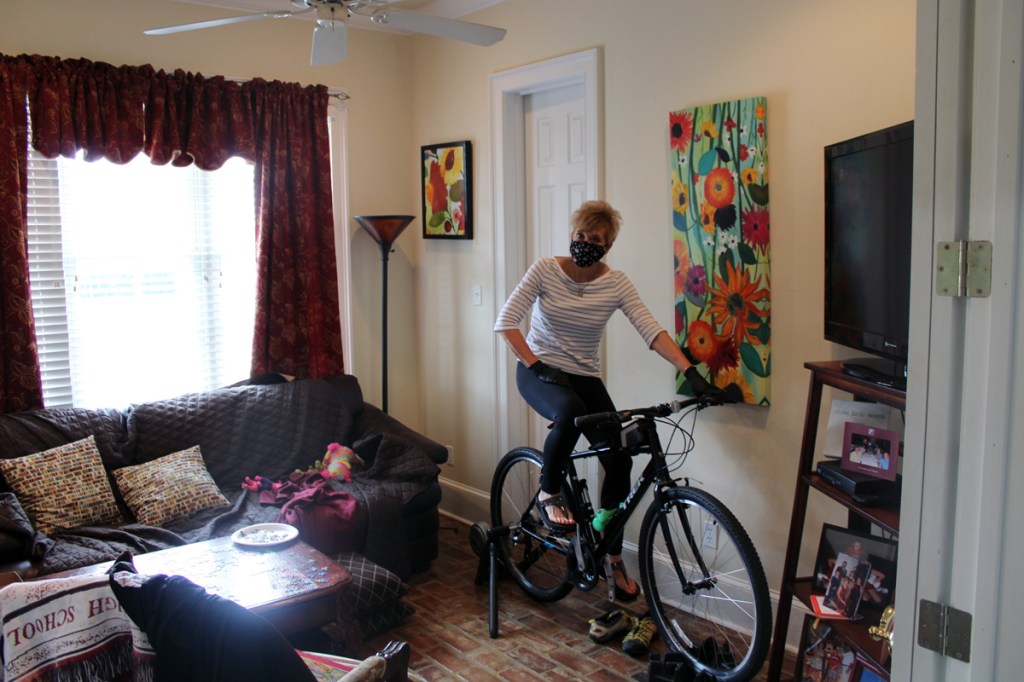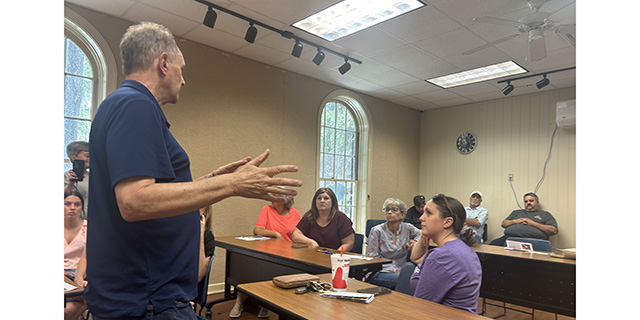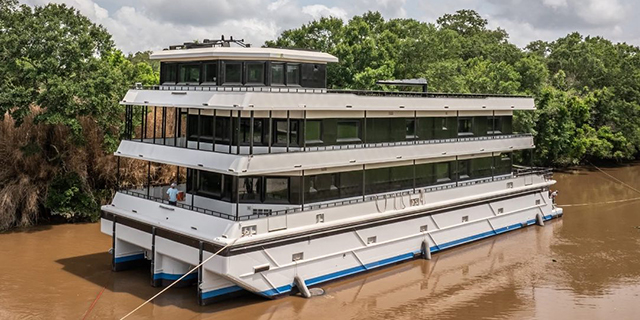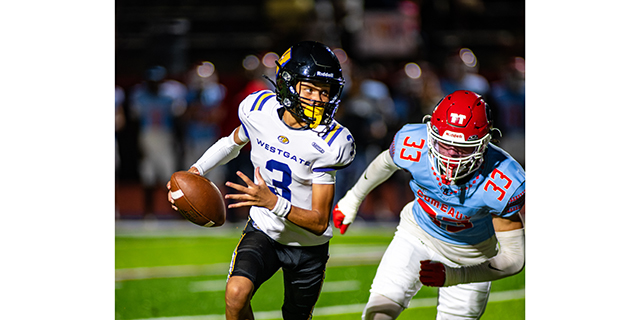‘Make me bionic’
Published 6:30 am Sunday, March 29, 2020

- Angela Langlinais-Bourg rides a bike to help recover from heart transplant surgery.
It was a regular September day last year, but Angela Langlinais-Bourg remembers it like it was yesterday.
Going from an early morning workout to work that afternoon, Langlinais-Bourg felt weaker and weaker as the day went on.
“I called my heart doctor who was running some tests at the time and he told me to come to the hospital and we are going to admit you and monitor you,” Langlinais-Bourg said.
Langlinais-Bourg has been a family physician for more than 21 years in her hometown of New Iberia.
But on that September day in 2019, Langlinais-Bourg said she became so weak that she was in a chair rolling from room to room as she visited each patient.
“When I went to the hospital that night, I ended up in a complete heart block,” Langlinais-Bourg said. “The right and left (side of the) heart weren’t working together, they were working against each other.”
Langlinais-Bourg remembers waking up two days later at Ochsner Medical Center in New Orleans, and credits Dr. Paul Gulotta Jr., her New Iberia heart doctor, with saving her life.
“When he noticed the heart block, he put a heart pump through my groin,” Langlinais-Bourg said. “It kept the heart pumping enough for them to transfer me to Ochsner.”
After a few days in Ochsner, the doctors reached out to her about what needed to be done next — getting listed for a heart transplant.
Because she didn’t want to leave her practice, Langlinais-Bourg continued working as best she could, reviewing patient’s lab results and calling in prescriptions while still in the hospital.
Langlinais-Bourg said she chose family medicine because it allowed her to utilize multiple facets of her profession.
“Not only are you a physician for the patient, but you also are a detective to figure out the diagnosis,” Langlinais-Bourg said. “You are a counselor to a patient when it comes to relaying information.”
Langlinais-Bourg said being a family medicine physician makes one a real jack-of-all-trades, where there is never an office visit that’s the same as another.
“And that’s the best part of being a physician for these last 21 years,” Langlinais-Bourg said.
So when her doctor told her about the heart transplant, Langlinais-Bourg said she wanted to know how long she would be away from her practice.
Langlinais-Bourg was told that she would have to wait at least a minimum of 18 months before she could be in contact with her patients again.
It was then she realized she would have to give up the one job she loved more than anything.
“I turned to my husband and told him it’s time to close the practice,” Langlinais-Bourg said, “It’s time for the doctor to now become the patient.”
Langlinais-Bourg was in the hospital for three weeks before receiving her heart transplant and during that time was kept her alive with different pumps.
After the transplant, the doctors performed an autopsy on her old heart, and came back with the diagnosis — sarcoidosis.
“Think of it as arthritis of the body,” Langlinais-Bourg said. “Sarcoid is usually arthritis of the lungs that attacks the lungs and causes them to get thick.”
In her case, it was the rare sarcoidosis that attacks the heart.
Langlinais-Bourg was patient 1,002 on the Ochsner transplant list but because of her condition, was moved to the top.
While doctors don’t know why someone gets sarcoidosis, the treatment, in her case was a heart transplant and medication.
Langlinais-Bourg takes more than 18 pills in the morning and 11 at night, and three others throughout the day. The medicines are fighting to keep the body from rejecting the new heart, she said, “because the body thinks of it as a foreign object. So until the body gets used to it, those medicines are trying to prevent any rejection.”
As of now, Langlinais-Bourg undergoes a monthly blood test to ensure there is no rejection, and said everything has been great so far.
Langlinais-Bourg will be taking the medication for the rest of her life.
“So it’s going to be a really long time I am taking this medicine,” she joked.
Throughout the whole process, Langlinais-Bourg remained positive in the weeks leading up to her surgery.
She spent 21 days lying down and at that time, she watched a lot of Food Network, did Sudoku puzzles and watched all 10 seasons of “Friends.”
“Basically you do what you have to,” Langlinais-Bourg said.
The night before the surgery, Langlinais-Bourg and her husband, G.P., were told that a heart was ready for surgery.
“That was probably the best night’s sleep I had the entire time in the hospital, knowing that the heart was coming,” Langlinais-Bourg said.
The day of the surgery, Langlinais-Bourg said, she started to tear up when she realized that they were having a party for her in the surgery room.
“There were dozens of people and they were all dressed in a pretty blue with caps and gloves,” Langlinais-Bourg said. “They were there at my party.”
Before going under, Langlinais-Bourg told her anesthesiologist the same thing she told her surgeon a few years ago before her knee surgery.
“Make me bionic,” she said. “And they did.”
Though she hasn’t met her heart donor’s family, Langlinais-Bourg wrote to them through the Louisiana Organ Procurement Agency, which gave the letter to the family.
“I know they feel my prayers and the thanks of me and my family,” Langlinais-Bourg said, teary-eyed and grateful.
With April being Donor Awareness month, Langlinais-Bourg said she knows it will have more meaning than before.
Langlinais-Bourg contacted LOPA to be a volunteer, and said she wants to do her part to help others.
Though she is limited in her activity, Langlinais-Bourg is still active, riding a stationary bike in her home and even using a rowing machine.
Langlinais-Bourg took up playing the piano and said she loves to fish offshore, a favorite summertime activity she hopes to resume.
“And I’m looking forward to the doctors giving me the OK this summer to be able to go offshore,” Langlinais said.





